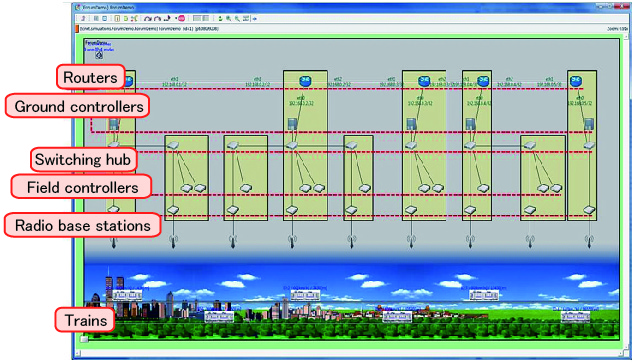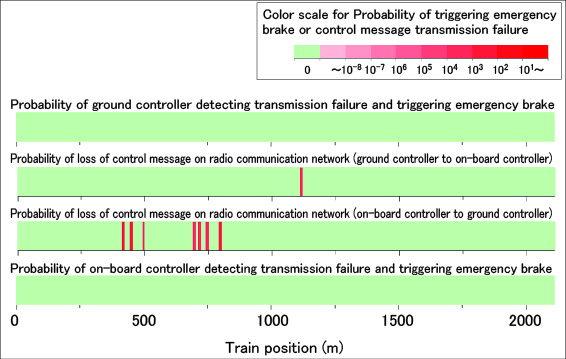8. Radio communication network simulator to evaluate the stability of radio based train control systems
- We developed a simulation system to support the design and performance evaluation of the radio communication network systems for radio based train control systems. This simulation system calculates the data transmission quality over a radio communication network taking into account the trackside radio propagation and electromagnetic environment. And we can evaluate stability of train control systems by using the simulation system.
- This simulation system can support the evaluation of radio communication system designs ensure their compliance with international standards and help reduce the cost of trials.
When introducing a radio based train control system, special care for a radio communication network needs to be taken during the design and construction stage in order to safeguard against control message transmission errors and delays to ensure that operational safety and stability is maintained. However, the propagation characteristics of electromagnetic waves, interference and obstructions etc. along railway lines also have to take into account in the design and architecture of such systems, which requires expert radio communication knowledge and significant effort. In addition there is considerable cost involved in carrying out tests to prove the system performance complies with the requirements in the IEC standard IEC 62280 for the safety related communication system. Consequently, in an effort to reduce cost and manpower required for design and testing, a simulator was developed which can give the probability of stopping due to emergency braking by calculating the data transmission quality over the radio communication network (control message transmission error rate, delays, etc.) (Fig. 1).
The simulator estimates the probability of a train being forced to make an emergency brake due to deterioration or obstructions to data transmission quality based on fixed values set for the line layout of the section along where the radio network is supposed to be introduced, such as the position of the base station, performance of the radio equipment, the network architecture, sources of signal interference or noise (Fig. 2).
Confirmation was obtained that estimations of the probability of telegram error or transmission delay from the simulation are almost identical to the actual radio communication network characteristics.
The simulator developed through this research as well as overcoming conditions which make actual tests with real trains difficult to conduct, manages to provide an evaluation for operational safety and stability in a short time under the Radio Law and cost constraints. Furthermore, reducing the scale of the prototype and experiment, lowers overall cost.

Fig.1 An example of simulator screenshot
Fig.2 Examples of simulation result